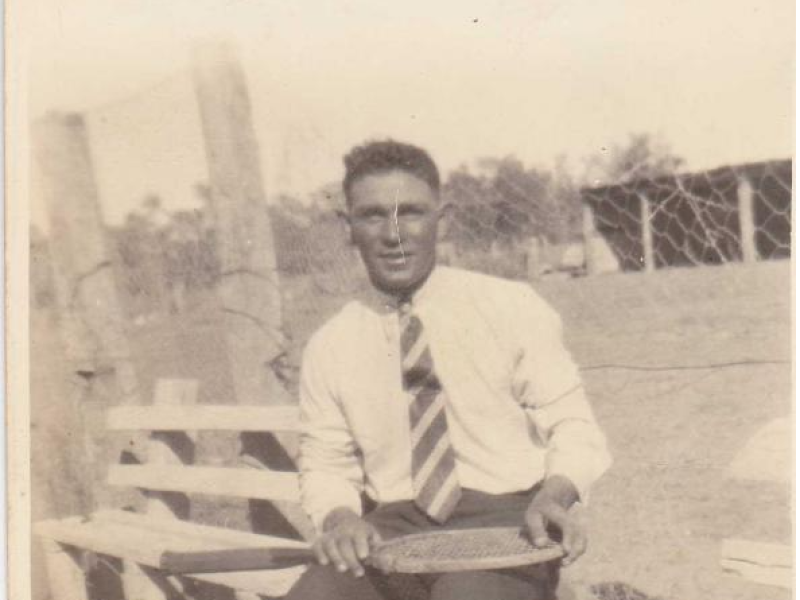Private John Henry Sharpe, 2/1st Guard Regiment
Erin Vink’s great-uncle John Henry Sharpe was a remarkable man. He enlisted for service in the Second World War at Emerald, Queensland, in 1942 at the age of 35 but he had a secret.
“That’s not actually the name his family knew him by,” Erin said.
“His name was William Hanson or Davis – he used both – and he grew up on the Aboriginal mission in Brewarrina with his sisters, but he went to the pub one night and got into a fight and thought, ‘Oh no, I’ve got to leg it, I’ve got to get out, they’re going to catch me,’ so he moved to Rockhampton and changed his name and started a new family there.
“He enlisted during the Second World War and went to Tobruk as a reinforcement after the siege. He was also in North Africa at El Alamein and went to New Guinea and Borneo for a little bit as well, but he was lucky; he came back in one piece.”
For Erin, a proud Ngiyampaa woman, it’s important to share the stories of Aboriginal and Torres Strait Islander servicemen and servicewomen who gave so much for their country.
“We have these really amazing stories of Aboriginal people being heroes,” she said.
“It’s pretty incredible and it’s pretty inspiring; to think that some of these people who were going away to war in the First World War and the Second World War would even want to serve their country when it was illegal to do so, their children were being removed, and they were being put on missions, or their family was being murdered within living memory, is pretty amazing. But it just goes to show how important country is to them.”
As the Indigenous art curator at the Australian War Memorial in Canberra, Erin has been working to help ensure their contribution is never forgotten.
She provides management and support to major Indigenous art, photography, film and sound commissions and acquisitions and has been adding Indigenous languages to the national collection database so that people, places and objects associated with a particular language group can be easily identified and found.
“When I started at the Memorial, we didn’t have any kind of Indigenous cultural protocols, and we didn’t have any way to track language groups or people’s nations or tribes,” she said. “It was a real privilege to get the job, so it was important to get it right, and to get the languages up and then create Indigenous protocols for the collection as well.”
Read more about John Henry Sharpe and documenting indigenous people and their stories at the Australian War Memorial. Follow the link below.
- Australian War Memorial https://www.awm.gov.au/articles/blog/erin-vink-and-john-henry-sharpe

 Australian War Memorial
Australian War Memorial